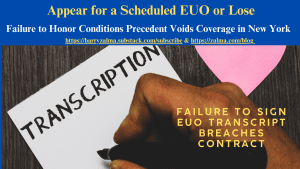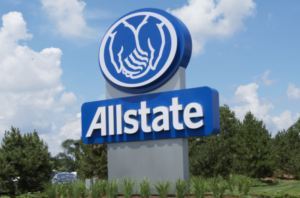Beyond bottled water and sandwiches: What FEMA is doing to get hurricane victims back into their homes

In a pattern all too familiar to people affected by disasters, hurricanes Helene and Milton have disappeared from the headlines, just a few weeks after these disasters ravaged the Southeast. Although reporters have moved on, recovery is just beginning for people who were displaced.
According to government and private analysts, damages may exceed US$50 billion apiece for these two storms. The Red Cross estimates that over 7,200 homes were destroyed or severely damaged and that more than 1,200 people were living in shelters across the affected states as of late October 2024.
Staffers from the Federal Emergency Management Agency have been on the ground since before Helene and Milton hit, positioned to help as soon as the storms passed, along with state and local responders. But many people aren’t clear about how FEMA helps or what its responsibilities are.
This may be one reason why the agency has had to dispel rumors about its response to Helene in North Carolina, such as assertions that representatives were coming to seize damaged property.
We study the impacts of natural disasters and how communities recover. Here’s what FEMA does in zones battered by disasters like Helene and Milton:
This FEMA video explains how to initiate claims after federally declared disasters.
Quick cash grants, then funding for repairs
FEMA works year-round helping communities prepare for disasters and training emergency management personnel to respond to these events. In the wake of declared federal disasters, it offers its Public Assistance and Individuals and Households programs.
Public Assistance Program funds are available to state and local governments and some nonprofits to help pay for things like removing debris, preventing further damage and restoring public infrastructure. Support from the Individuals and Households Program may include funds for temporary housing and for repairing or replacing primary residences, as well as provision of temporary housing units for people displaced from their homes.
FEMA launched a new form of flexible aid in March 2024 that provides quick cash payments of $750 per household for immediate needs, such as food, water, gasoline and emergency shelter. Contrary to rumors that have circulated in the wake of Helene, these payments are just a start, not the maximum support that FEMA offers.
Applicants have to file claims to receive further aid. These requests go through extensive review, such as inspections of home damage. FEMA then decides how much aid to provide, if any.
The agency will fund repairs intended to make the home safe to live in, but this work may not be enough to return the home to its pre-disaster state. Currently, the maximum FEMA aid for housing assistance is $42,500, plus an additional $42,500 for other disaster-related needs. For many, these amounts will be insufficient.
FEMA officials say the agency has enough funding to handle immediate response and recovery from both Helene and Milton. However,
until damage from both storms has been fully assessed, it is hard to know whether FEMA will need supplemental funds from Congress to support long-term recovery.
Insurance plays a key role
FEMA’s programs are intended to help with temporary housing and other needs that aren’t covered by insurance. Homeowners are expected to protect themselves against losing their dwellings by insuring their homes.
However, some natural disasters are not always covered by homeowners insurance. They include storm-driven flooding, earthquakes and wind damage from hurricanes and tornadoes.
In places that are vulnerable to these hazards, homeowners may have to seek separate coverage, either from private insurers or government-backed lenders of last resort. Households that don’t purchase special coverage, either because it costs too much or they don’t think they need it, will struggle to recover.
According to FEMA, only 4% of U.S. homeowners have flood insurance, while 99% of U.S. counties have experienced flooding since 1996.
Other federal funding sources
Another federal funding source for housing repair and replacement and other personal property losses is the Small Business Administration. But, unlike FEMA grants that don’t need to be repaid, the SBA only offers low-interest loans.
The main source of funding for long-term housing recovery is the U.S. Department of Housing and Urban Development’s Community Development Block Grant – Disaster Recovery grants. These funds must be approved by Congress following a disaster, so it can take months or years for funds to reach communities.
Awarding this money as block grants gives state and local governments more flexibility to meet the needs of affected communities. However, it also makes it easier to allocate the funds in ways that don’t address the housing needs of the people they are intended to help.
In recent years, we have seen many cases in which state or local officials have spent these funds inappropriately. For example, after Hurricane Katrina in 2005, Mississippi Governor Haley Barbour redirected most of his state’s HUD funds to economic development projects, including expanding the port of Gulfport, rather than rebuilding housing for storm survivors.
Fighting to direct funds to those who need them most often requires legal action, extending the wait for hard-hit communities that need it.
Renters have few options
Disaster recovery programs often overlook renters, even though in many areas up to half of residents may rent their homes. Renters have little control over whether their homes are rebuilt at all, much less whether they will be allowed to return to them.
Our research has shown that owner-occupied housing generally recovers much more quickly than rental housing. Apartment buildings also face a more uncertain recovery than single-family homes.
Helping the neediest victims
Even after recent updates to its rules, FEMA still struggles to adequately meet the needs of the most vulnerable groups in society. This includes low-income and minority households, people with disabilities and those who are undocumented.
Poor households often live in homes that are in bad shape or that have gone through previous disasters without repair. In such cases, it can be hard for FEMA inspectors to determine how much damage was caused by the current disaster, which in turn can lead to claims being denied.
In south Texas, after hurricanes Dolly and Ike in 2008, thousands of low-income households’ claims were denied, leading to a class-action lawsuit that homeowners ultimately won. After Hurricane Maria devastated Puerto Rico in 2017, many homeowners were denied rebuilding aid because they couldn’t provide a title to prove ownership.
In response, FEMA created new rules in 2023 for demonstrating ownership. For example, FEMA has modified and expanded the types of documentation needed to prove ownership. The agency has also changed eligibility and assistance rules to make it easier to qualify for assistance.
Recent research suggests that, at least on the whole, FEMA’s Individual Assistance Program is not likely to underserve poor households. Nonetheless, as people across the Southeast take stock of losses from this year’s hurricanes, we believe it will be important to pay special attention to under-resourced households, whose needs may not be adequately addressed by federal programs.






